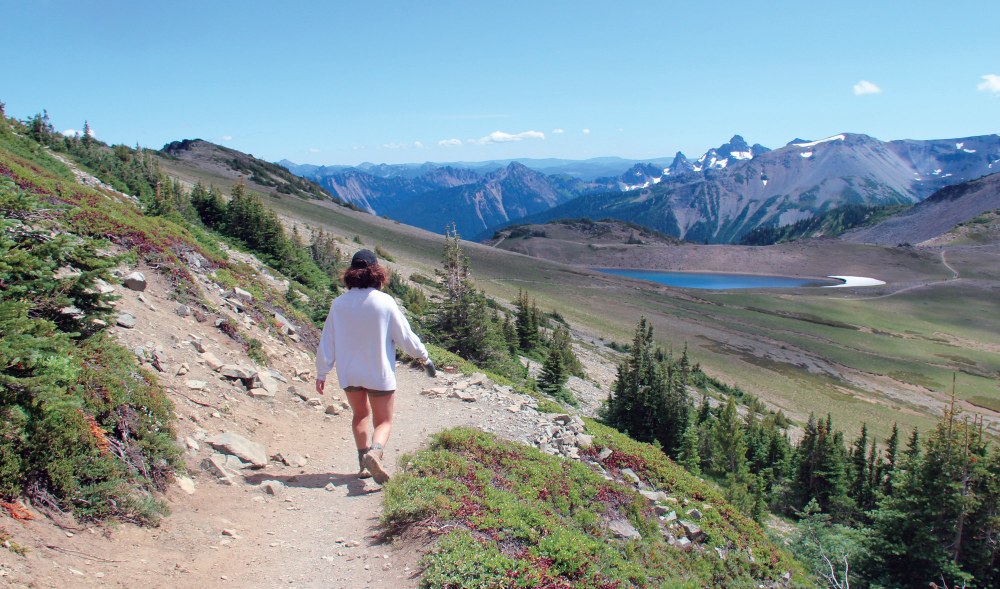
When spring hits, hikers turn their sights to alpine adventures. As we welcome the new season, it can be easy to jump too quickly into activities without proper preparation. But how do we make sure to not overdo ourselves in our eagerness to visit favorite trails? And how do we maintain training programs when motivation is low, or life is distracting? Below, I share training tips inspired by writer and speaker James Clear’s philosophy on identity-based habits.
Applying identity-based habits to hiking
One way to create a strong mental foundation for training is by shifting how we frame our objectives. Instead of focusing on outcomes, align habits with your identity to increase the likelihood of success. For example, instead of saying “I want to hike more” (an outcome), reframe your mindset to establish hiking as an identity by saying "I am a hiker."
Identifying yourself as a hiker then begs the question: what do hikers do? They move their bodies regularly, both on and off the trail. They fuel themselves to maintain energy and successfully perform during their favorite activity. They prioritize sleep and recovery to manage stress and keep their bodies strong and healthy. And they employ smart training techniques like gradually increasing elevation gain, mileage, and pack weight rather than jumping too soon into a hike they’re not prepared for.
Introducing these hiking habits into your routine may seem daunting, so it’s important to incorporate strategies that make these habits achievable. Consider doing things that make training seem attractive and easy to accomplish, such as placing your boots by the front door so they’re easier to grab for an afternoon walk or starting your hiking journey with short, local trails and building your mileage by less than 10% per week. You could also organize hikes with friends, track your mileage in a journal to experience the reward of steady progress, or use an app to log your trip reports and get excited for future outings by researching other trails.
Practical tips for trail success
To maintain training momentum, incorporate these actionable tips into your routine.
- Create a pre-hike ritual that builds excitement. I like to pack my bag the night before, which notifies my dog an adventure is afoot. His unwavering enthusiasm helps get me out the door the next morning.
- Enlist an accountability partner, class, or small group of hikers within The Mountaineers to help you stick to your plans. Join a hiking group such as GoHike or the Conditioning Hiking Series whose leaders will provide you with the support you need to thrive.
- Attach your new hiking habits to your existing routine. For example, tell yourself that after brushing your teeth, you will do ten squats, or that before breakfast, you will do five lunges to start building your hiking muscles. Linking a hiking habit to a pre-established habit helps build momentum toward a sustainable routine. Once you have the habit established, expand it gradually to the desired length (for example, 30 minutes twice a week).
By cultivating your identify as a hiker and setting achievable goals, you can create a strong mindset to prepare and challenge yourself for the season ahead.
Courtenay Schurman is an NSCA-CSCS certified personal trainer, Precision Nutrition Level 2 Certified Nutrition Supercoach, and co-owner of Body Results. She specializes in training outdoor athletes. For more how-to exercises or health and wellness tips, visit her website at bodyresults.com or send a question to court@bodyresults.com.
This article originally appeared in our spring 2025 issue of Mountaineer magazine. To view the original article in magazine form and read more stories from our publication, visit our magazine archive.
 Courtenay Schurman
Courtenay Schurman